While all photosynthesizing plants need sunlight to survive, some require direct sunlight to thrive. Plants from tropical and arid regions are often sun-loving and need at least six to eight hours of direct sunlight to be healthy and produce their flowers.
In this guide, we’ll discuss five plants that like direct sunlight from various regions of the world. Read on to learn more!
Our Top 5 Picks for Plants that Love Basking in the Sun
If you want to enjoy house or garden plants in an extra sunny location, check out these five sun-loving beauties!
1. Lavender (Lavandula angustifolia)
Lavender (Lavandula angustifolia) is a somewhat woody, perennial herb native to the Mediterranean region. Given its native range, this shrubby plant requires at least six to eight hours of sunlight a day to thrive.
The lavender plant grows about two feet tall and wide, which includes the thin, upright stalks that produce tiny, beautiful, fragrant purple flowers. The highly aromatic oils in the flowers are widely valued for use in soaps, candles, perfumes, cosmetics, beverages, and medicines.
Historians have documented the use of lavender as far back as 2,500 years ago in ancient Egypt and Rome where people used this lovely purple plant in soaps, perfumes, and herbal medicinal formulas.
Lavender is hardy in USDA growing Zones 5-9. It prefers arid, sunny climates and is notably drought tolerant. Flowering occurs typically from early June through August but can vary depending on the cultivar.
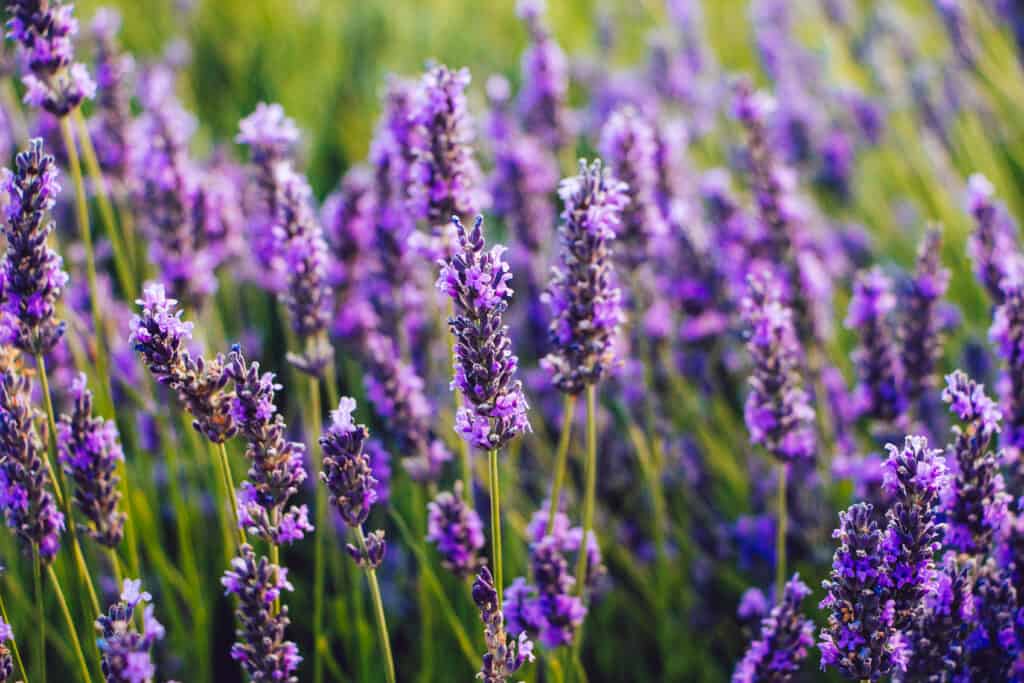
The lavender plant needs at least six to eight hours of sunlight a day to thrive and produce tiny, beautiful, fragrant purple flowers.
©iStock.com/ASIFE
2. Marigold (Tagetes)
Marigold (Tagetes) is a wonderfully easy-to-grow plant that blooms all summer long and loves to bask in direct sunlight.
Native to Mexico and Central America, this gorgeous plant can bloom a combination of yellow, orange, red, copper, white, and gold flowers from early summer all the way until late fall. These tough plants only stop blooming once hard frosts kick in. To produce their magnificent blooms, marigolds require at least 6-8 hours of direct sunlight.
The three main types of marigolds are African, French, and Signet. These names are likely a bit confusing since we just discussed that marigolds’ native range is Mexico and Central America. African marigolds are so named due to their early importation into Europe via a North African route, and French marigolds get their names from their popularity in French gardens.
African marigolds are the largest type and typically grow 2 to 3 feet tall with a 1 to 2-foot spread. French marigolds are much smaller and usually reach 6 to 12 inches tall with a 6 to 10-inch spread. Signet marigolds usually average 1 foot high with a 6 to 10-inch spread.
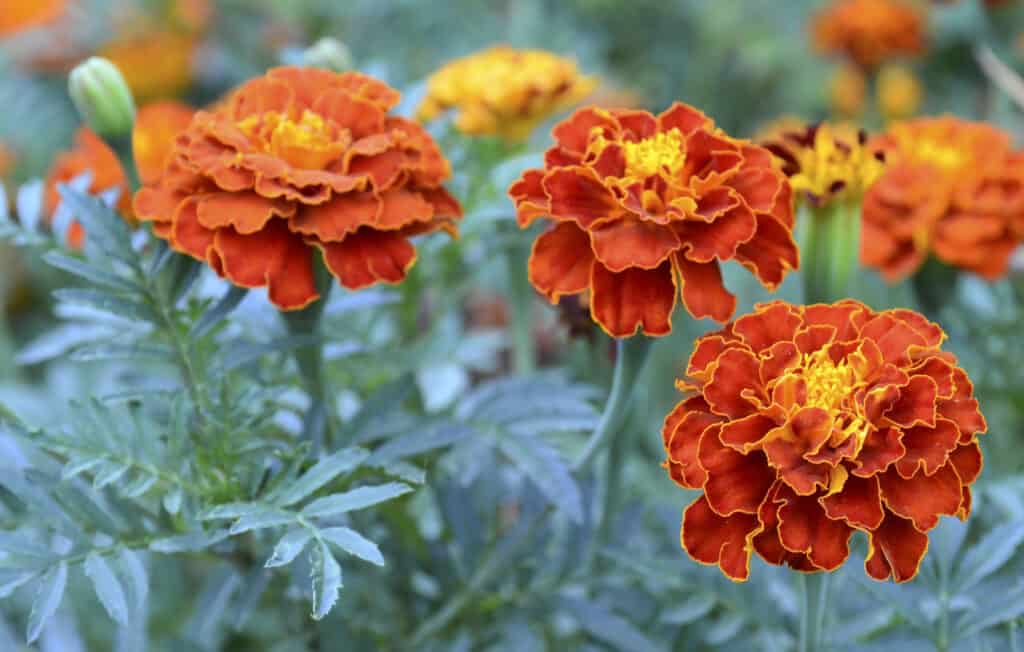
Marigold (
Tagetes)is an easy-to-grow plant that blooms all summer long and loves to bask in direct sunlight.
©iStock.com/svf74
3. Sunflower (Helianthus)
Given its name, it comes as no surprise that the sunflower (Helianthus) is one of our picks of plants that like direct sunlight. In fact, growing sunflower plants track the sun daily, maximizing photosynthesis of the sun’s light. Young sunflowers start each day with their heads turned East, track the sun to the West throughout the day, and turn back to the East during the night. Plants, such as growing sunflowers, whose blooms follow the sun are called heliotropic. Sunflowers are also phototropic, which means the stem or stalk also stretches toward the sunlight.
Native to North America, sunflowers have been cultivated by indigenous peoples for over 4,500 years. Seeds are used for food and turned into oil, and the petals are used to make lovely dyes. Their cultivation has since spread from North America to Europe and around the world.
About 70 varieties of sunflowers exist, with a vast range of petal and seed colors. They also range significantly in size at maturity. Some varieties, such as the titan and mammoth sunflowers, can reach up to 15 feet high on average. The heads of these plants can reach 2 feet across. On the other side of the spectrum are varieties such as the elf sunflower which typically reaches about 16 inches high with a 4-inch wide head.
Ideal growing conditions of sunflowers can vary, but generally, they prefer loose, well-drained, deep soil with a pH of about 6.0-7.0. These sun-loving plants need at least 6-8 hours of direct sunlight to thrive. Their growing climate ranges widely from USDA Zone 2-11. Most varieties bloom for several weeks about mid-summer.
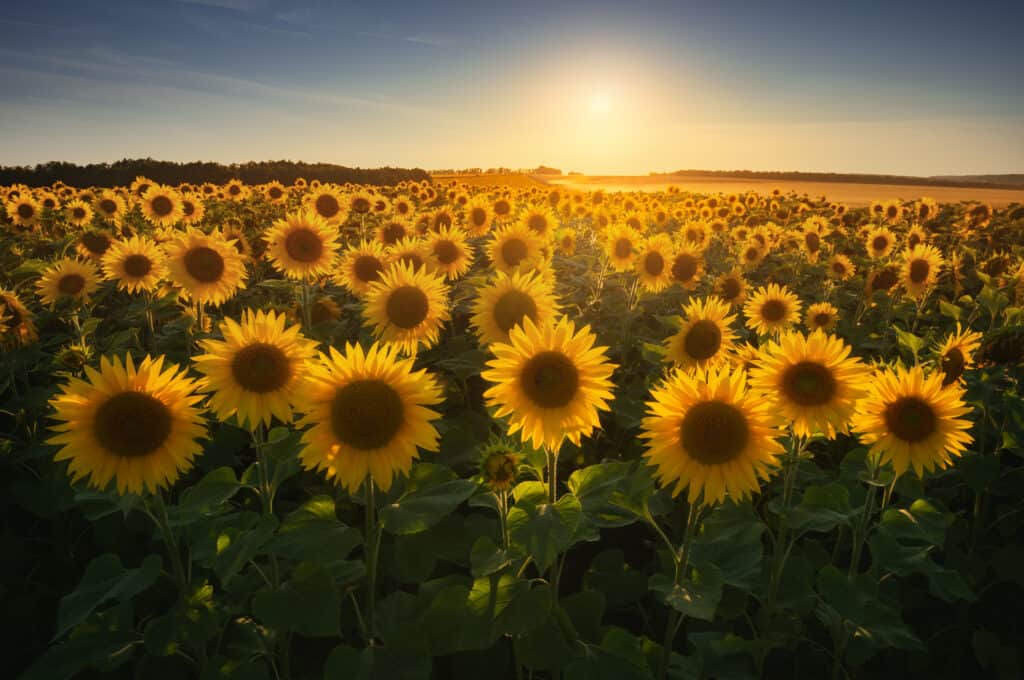
Sunflowers love sun so much their stalks stretch towards the sunlight.
©iStock.com/oleshkonti
4. Basil (Ocimum basilicum)
Native to the tropics of Central Africa to Southeast Asia, basil (Ocimum basilicum) thrives on sunshine and warmth. Basil has graced our cuisines, perfumes, soaps, oils, and medicinal formulas for over 5,000 years. Its cultivation has since spread around the world and is a staple kitchen herb in many homes.
Some varieties of basil, such as holy basil (aka tulsi basil) have been heavily researched for their medicinal properties. In ayurvedic medicine, holy basil has been used for thousands of years for its antioxidant, stress-relieving, immunomodulating, anti-inflammatory, and antimicrobial properties.
This lovely annual plant typically grows to about 18 inches tall with small, broad, and shiny green leaves. Its tiny white or purple flowers grow along its narrow vertical stems, blooming at the end of its season in early fall. You can harvest its leaves as it grows for about 4 months before it dies back in the fall. Belong to the group of plants that like direct sunlight, basil prefers to grow in at least 6-8 hours of sun and can thrive in up to 12 hours of direct sun. As a plant native to the tropics, basil can only grow as a perennial in USDA growing Zones 9-11. However, it can grow as an annual that you must plant yearly in Zones 4-8.
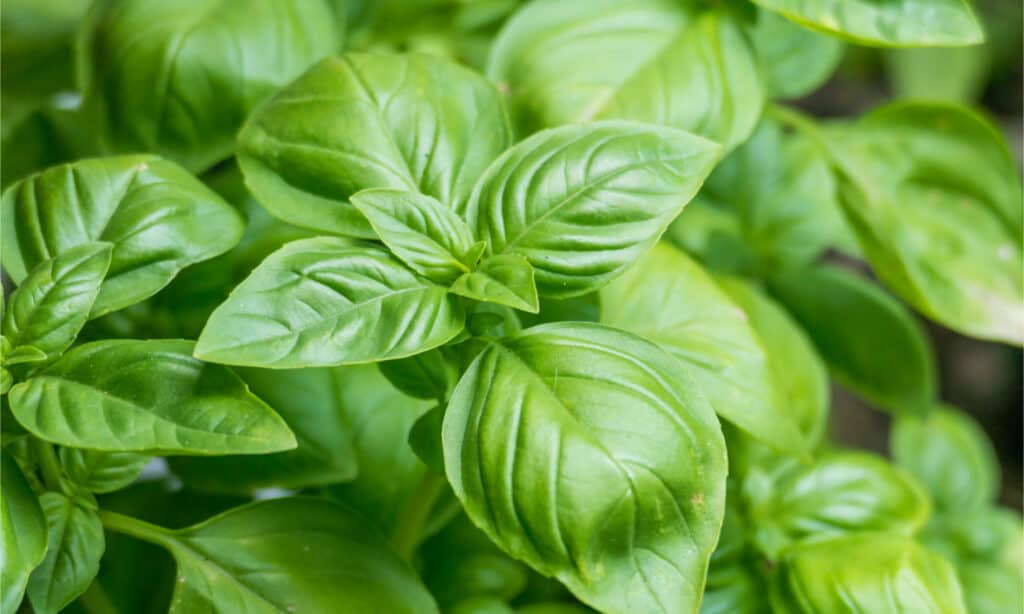
Basil has been used in recipes and medicinal formulas for more than 5,000 years.
©David Jalda/Shutterstock.com
5. Bird of Paradise (Strelitzia)
Native to the tropics of South Africa, the bird of paradise (Strelitzia) is a stunning sun-loving plant adored for its unique, colorful flower resembling the head of a brightly colored tropical bird. As tropical plants, most bird of paradise varieties are hardy in USDA growing Zones 9-12. They prefer to grow in moist, well-draining, highly fertile soil. A fall and winter bloomer in their warm growing climates, these gorgeous plants produce their unique flowers from October-December.
There are four main species of bird of paradise: orange bird of paradise (Strelitzia reginae), white bird of paradise (Strelitzia alba), giant bird of paradise (Strelitzia nicholai), and juncea bird of paradise (Strelitzia reginae var. juncea).
Orange Bird of Paradise (Strelitzia reginae)
The orange bird of paradise is the most common variety of this tropical plant with orange and blue petals. The crown of the flower is orange and sits atop a blue tongue. This evergreen plant grows an average of 4-6 feet tall with a spread of 2-4 feet. The broad, sturdy leaves can grow up to 2 feet long. This bird of paradise variety does well in 4-6 hours of direct sunlight. After more than 6 hours of direct sun, the flowers may start to droop.
White Bird of Paradise (Strelitzia alba)
A tree form of this sun-loving plant, the white bird of paradise can grow up to 18 feet tall with a spread of 5-6 feet. White petals, rather than orange, form the crown. Its leaves can grow 18 to 24 inches wide and 3-4 feet long.
Giant Bird of Paradise (Strelitzia nicholai)
The largest variety, the giant bird of paradise, can reach up to 30 feet tall with a spread capable of reaching 20 feet. The giant bird of paradise also has a crown of white flowers that sits atop a blue tongue. This giant variety enjoys 6-8 hours of direct sunlight.
Juncea Bird of Paradise (Strelitzia reginae var. juncea)
A variety of Strelitzia reginae, juncea, or leafless, bird of paradise also has orange petals, but they are much smaller than the common orange bird of paradise. It’s also known as the leafless bird of paradise as it stops producing green leaf structures once it reaches maturity. Instead, this unique Strelitzia variety produces clumps of light green-grey pointed petioles.
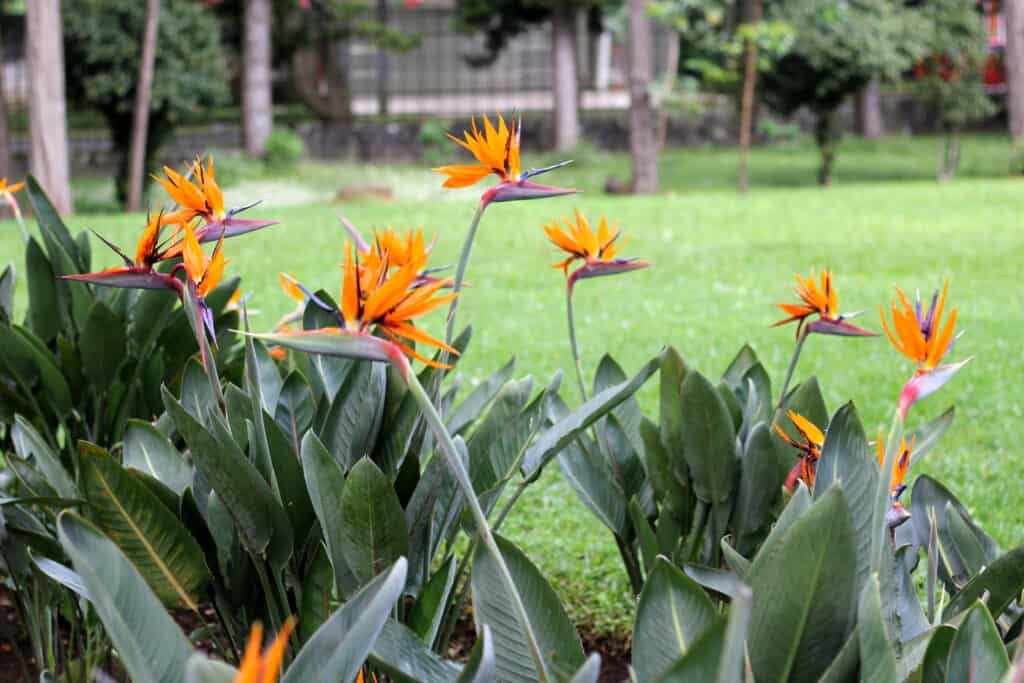
The bird of paradise is a beautiful sun-loving plant with flowers that resemble a brightly colored tropical bird.
©iStock.com/Arlette Lopez
Up Next:
- 7 Full Sun Annual Flowers
- 5 Full Sun Perennial Flowers
- French Lavender vs English Lavender: Is There a Difference?
The photo featured at the top of this post is © iStock.com/Valeriy Lushchikov
Sources
- ResearchGate, Available here: https://www.researchgate.net/publication/342880816_MEDICINAL_USES_OF_LAVENDER_OIL_LAVANDULA_LATIFOLIA_AND_ITS_EFFECT_ON_HUMAN_HEALTH
- University of Minnesota Extension, Available here: https://extension.umn.edu/flowers/marigolds
- Berkley Rausser College of Natural Resources, Available here: https://nature.berkeley.edu/news/2016/08/sunflowers-move-clock
- ScienceDirect, Available here: https://www.sciencedirect.com/science/article/abs/pii/S0926669018302711
- Clemson Cooperative Extension Home & Garden Information Center, Available here: https://hgic.clemson.edu/factsheet/bird-of-paradise/
Thank you for reading! Have some feedback for us? Contact the AZ Animals editorial team.






